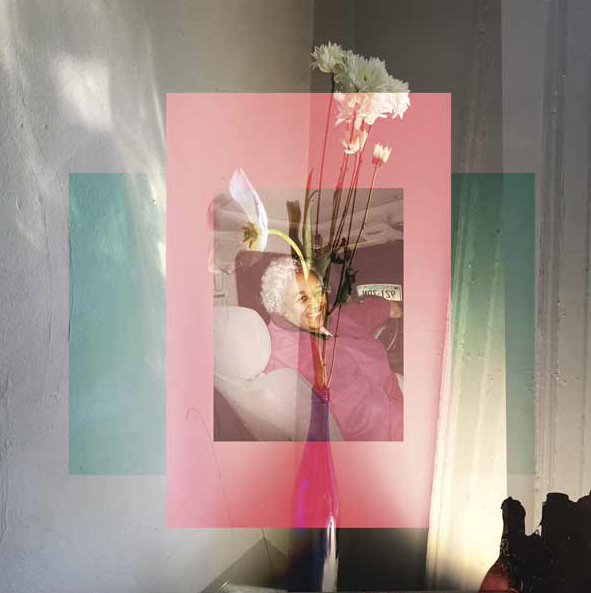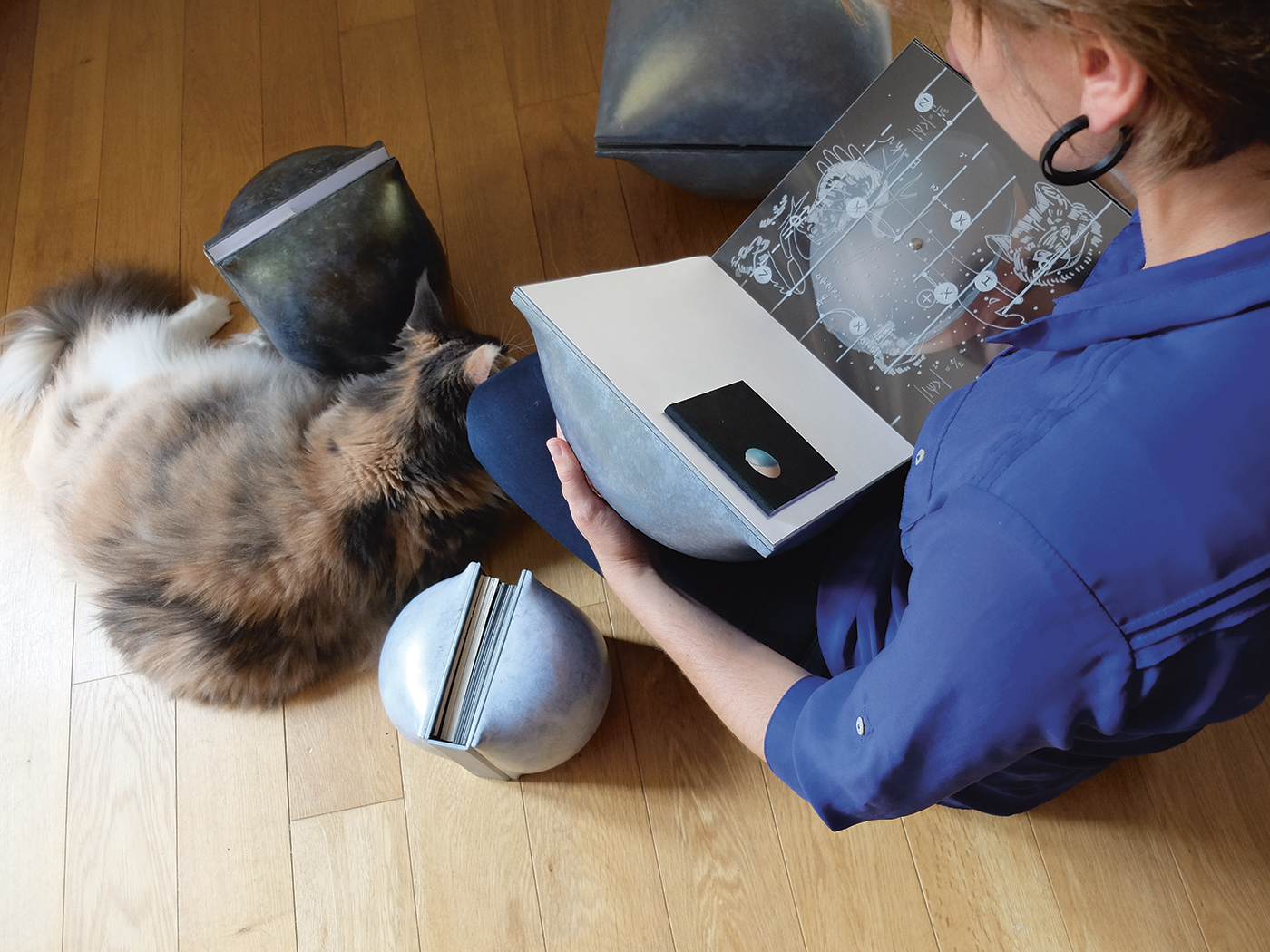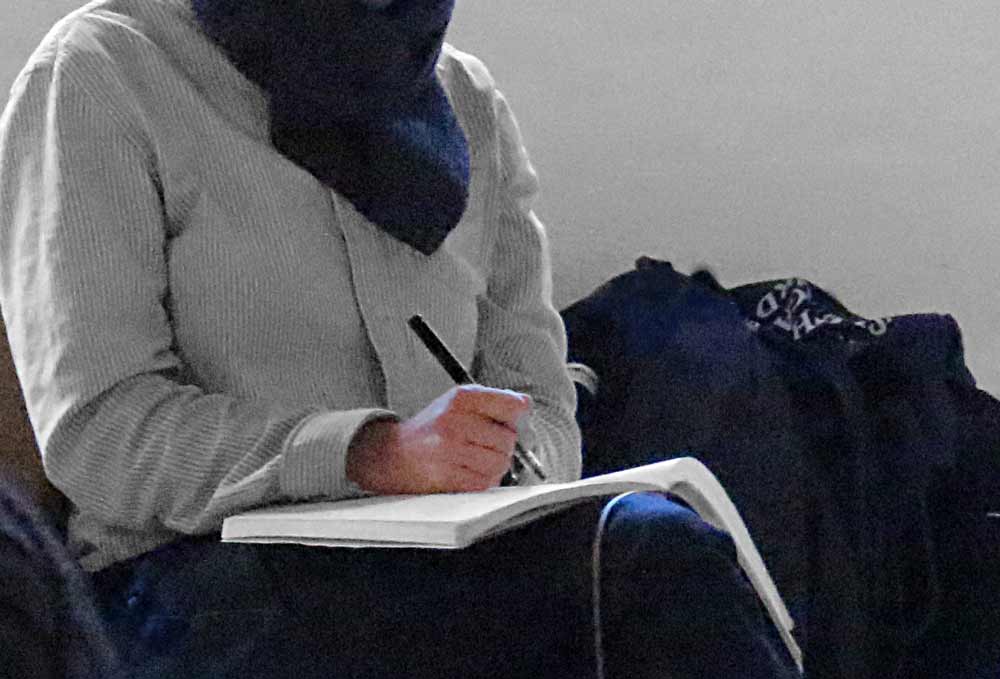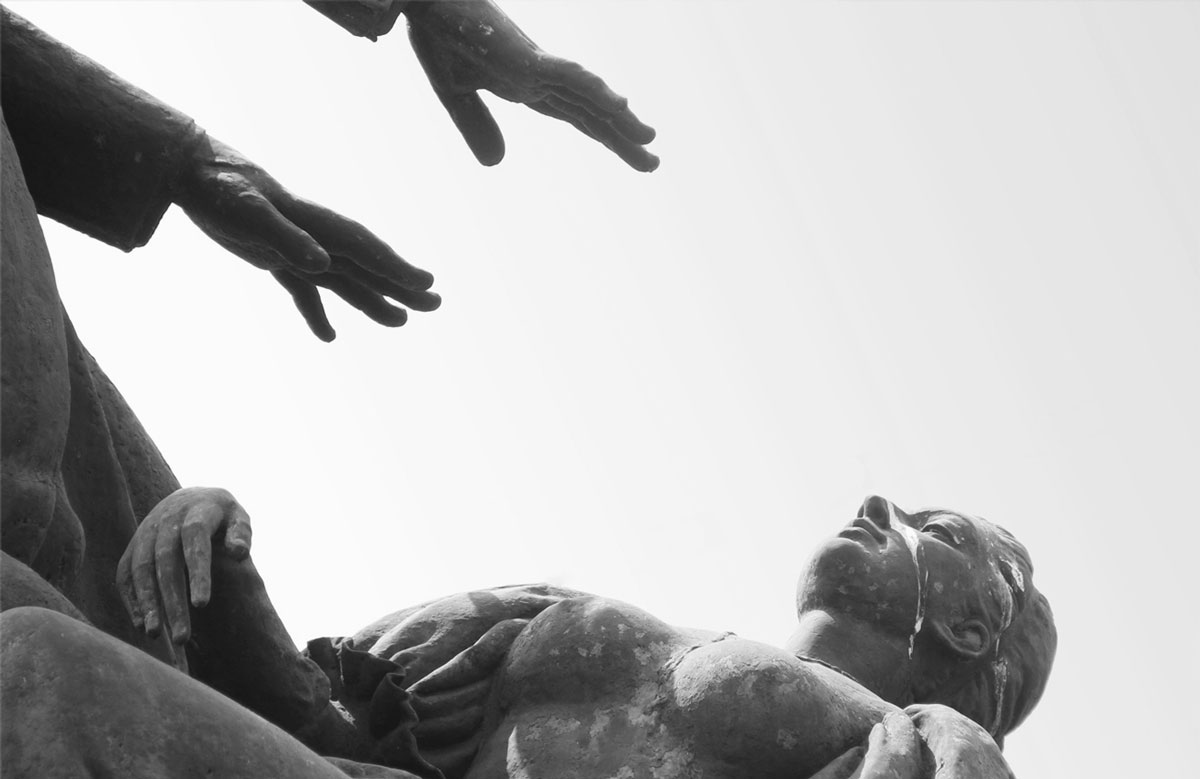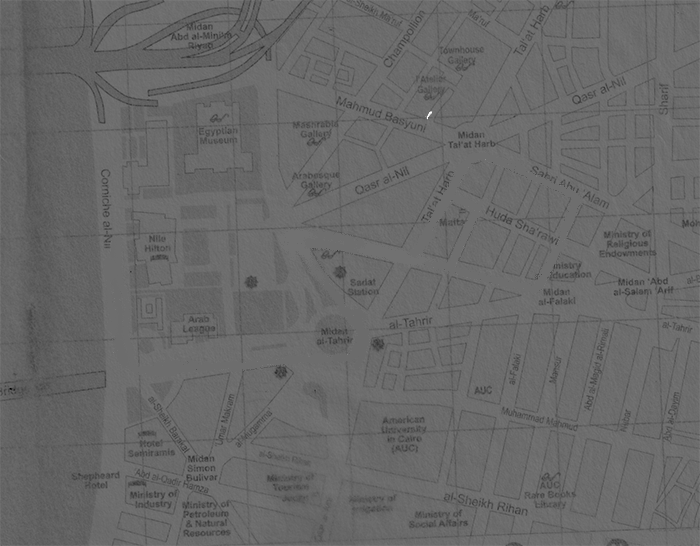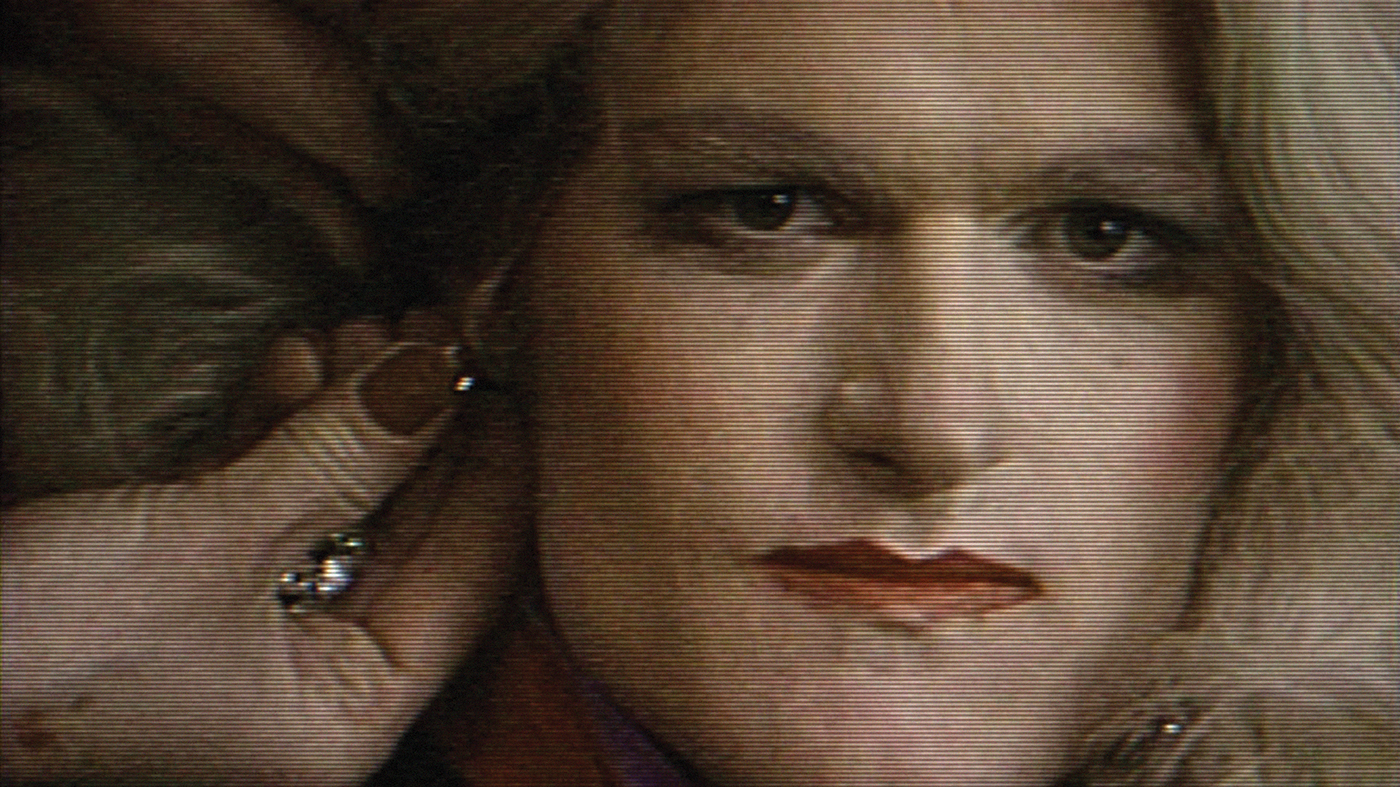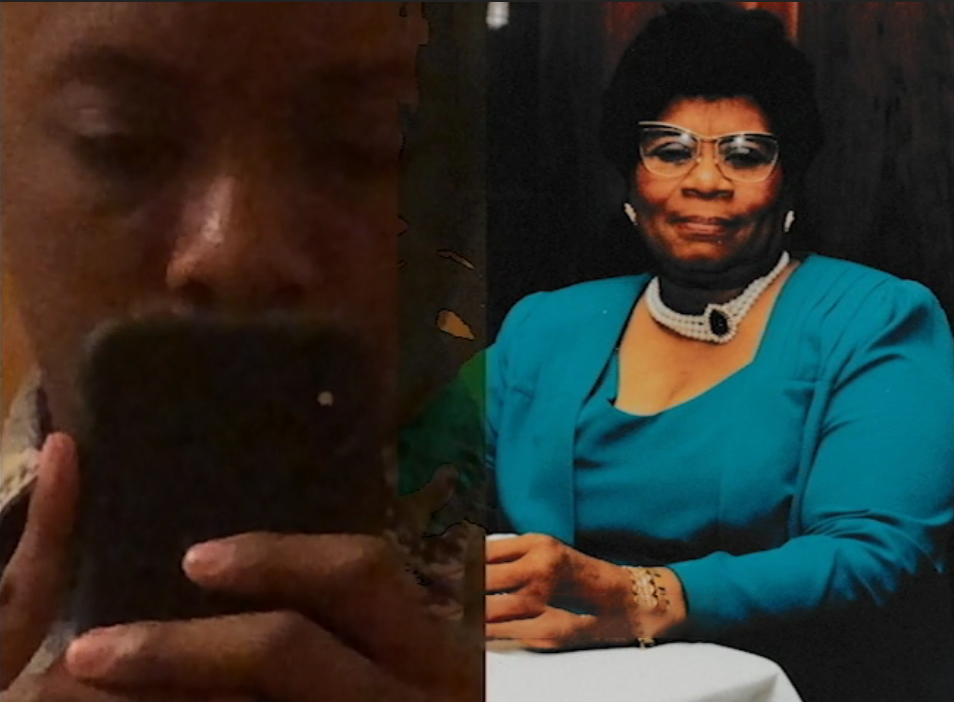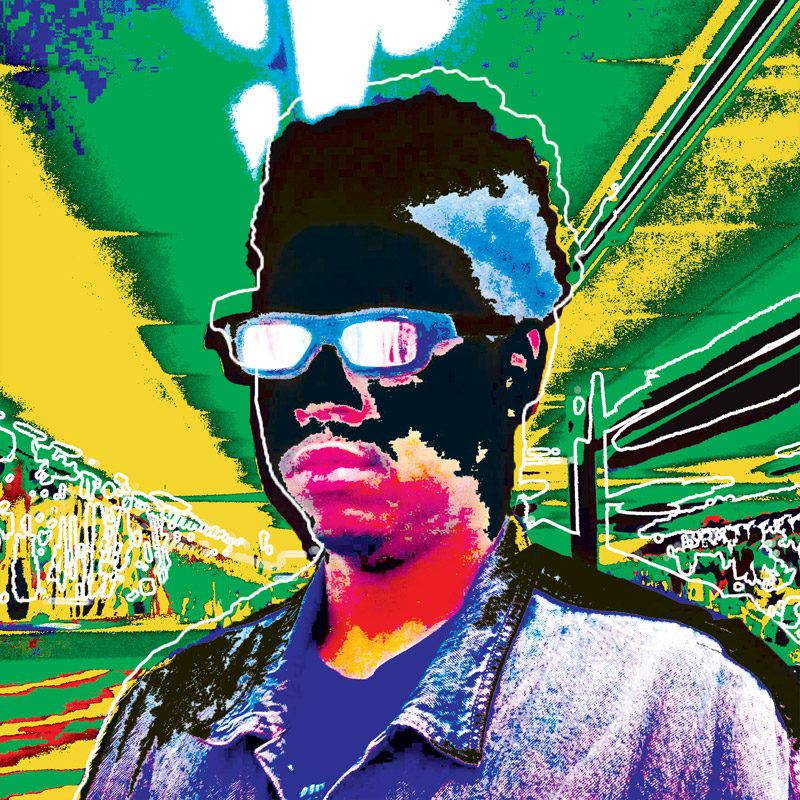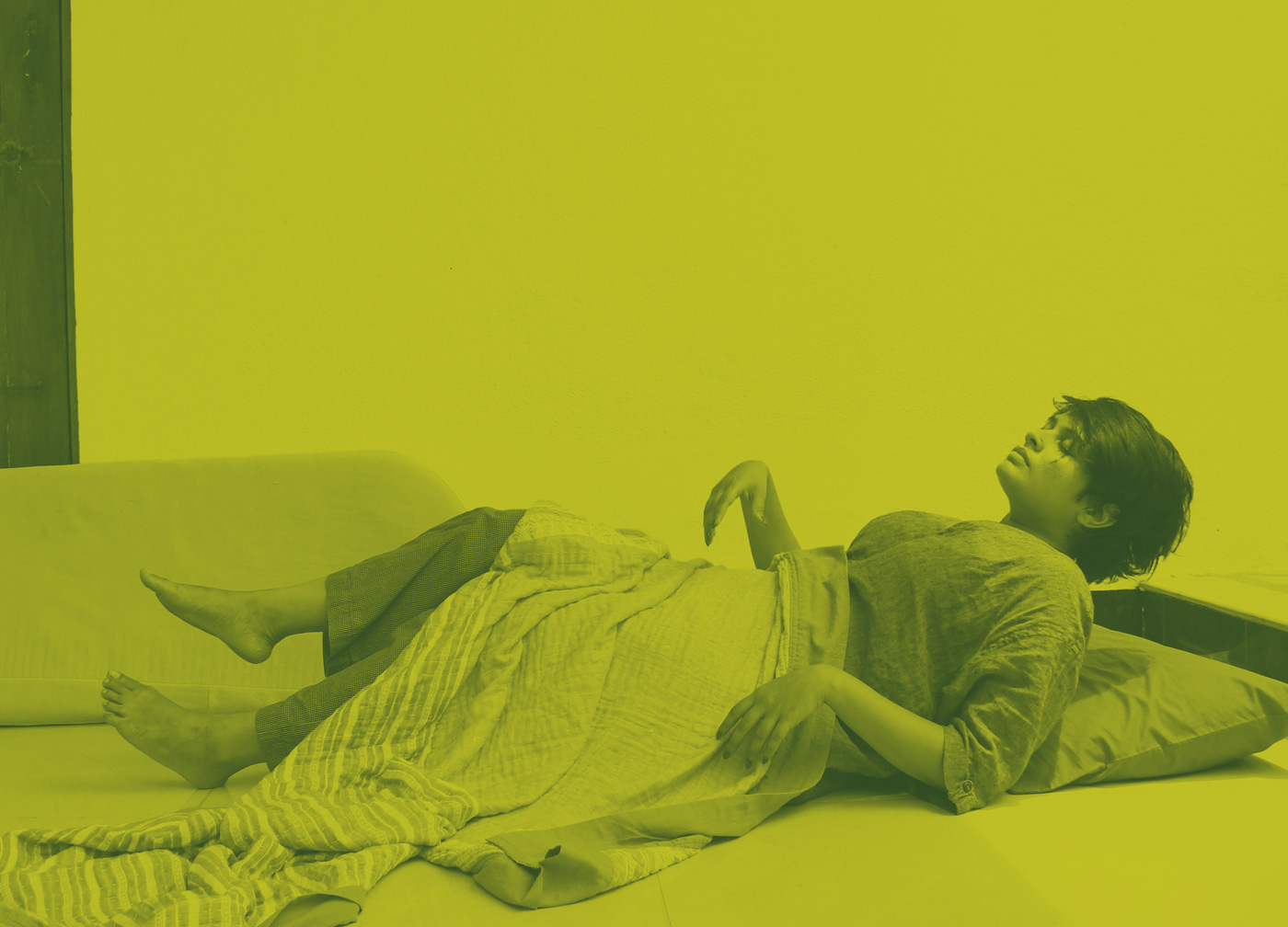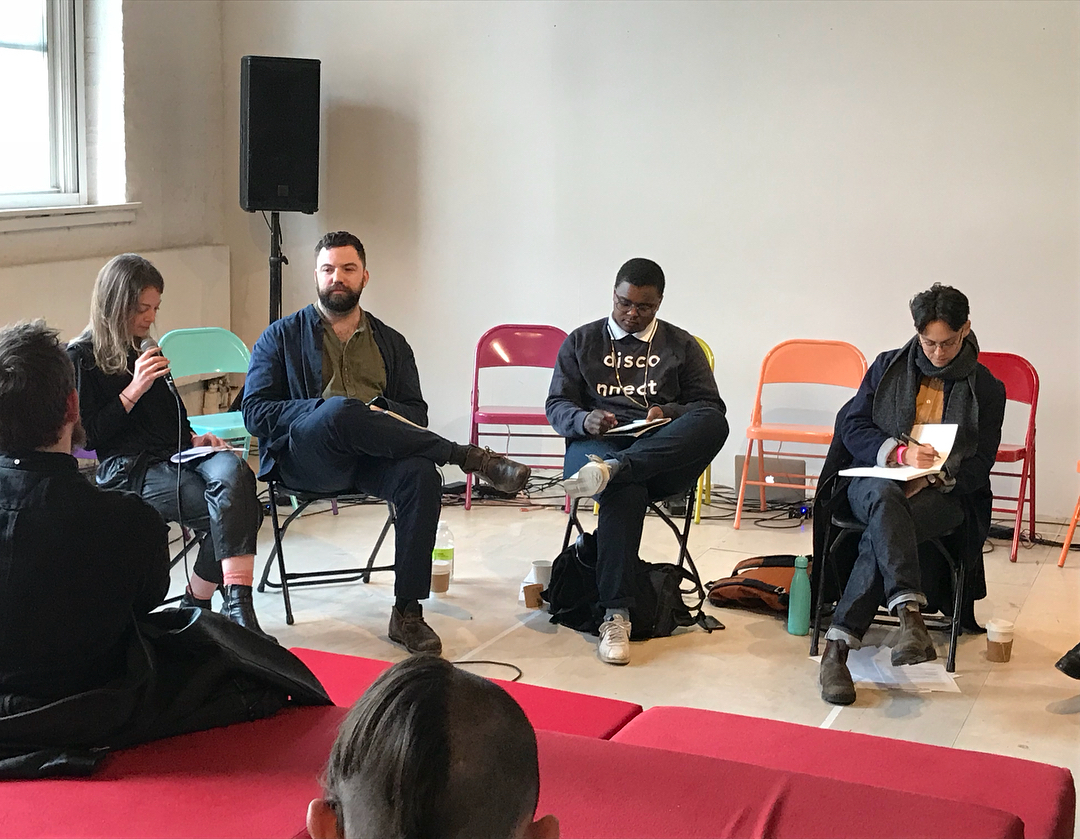Sleep!
Alona Weiss
It’s the end of January but I’m sweating like it’s August. The afternoon sun hits everything in a contrast of bright light and long, dark shadows. I spent about 24 sleepless hours traveling across two continents, in-between time zones, sitting in cars, planes, trains, and departure gates, leaving a frozen depression-era state of New York to reach Panjim in Goa state, the west coast of India. I’m standing at a traffic circle facing the Mandovi River, surrounded by colonial buildings previously used by the Portuguese colonizers that are now offices of the Goan government. The metaphorical distance between Brooklyn and this traffic circle crosses my mind as I gaze at a group of monkeys fighting over a bag of cashews that I accidentally dropped after one of them growled at me. One of the monkeys is sitting on the back of a yawning cow who seems to be in complete apathy to the loud barks of skinny stray dogs running between honking cars on their way to their resting pavement in the shadow, across the street. To wrap this cinematic scene, a flock of crows circle above and rest upon Goa’s most well-known landmark, the bronze monument that brought me to this traffic circle to begin with: The Statue of abbé Faria.
The Statue portrays the frozen scene of a man standing upright with his arms stretched forward, aimed at the woman who is lying at his feet, unnaturally positioned on the ground. His long hair and cape are pulled back as if a light wind is blowing in front of him. His smiling expression projects confidence as he stares into the face of the woman. The woman lays in submission. Her half-open eyelids suggest a state of trance or sleep. Her torso, right wrist, knees, and feet are up in the air, leaving her supported only by her butt and left arm, as if an invisible couch holds her body. She is wearing a long dress with big puffy sleeves. A skin-tight top highlights her round breasts and erect nipples. Her long hair is tied back in a knot and her expression is calm. The mysterious woman is not mentioned anywhere near the statue. She is neglected from its name and engraved plaques. Her identity goes unmentioned in most written essays, books, films, and articles I encounter as I research who she might be. The few exceptions that mention the existence of a female figure in the statue only verify that she is indeed unknown.
The man, however, is mentioned so often that it’s hard to detect truth from myth. The novelist Alexander Domas names a character abbé Faria in his book, The Count of Monte Christo, and the biography of fictional Faria sometimes blends with the real one. Nevertheless, even 263 years since his birth and 73 years since the inauguration of his memorial, the legacy of Faria, whether fiction or true, lingers on.
To most Goans, abbé Faria is still considered to be Goa’s most outstanding prodigy and his story is a matter of local pride.
I learned about Faria in 2016 while developing a collaborative project with Rujuta Rao, a visual artist, writer, food lover, and friend, when she returned to her hometown Goa.
Curious to learn more about Rujuta’s hometown, I wandered online, looking for Goa’s landmarks, when I came across an image of the statue. I told Rujuta about the image I found and asked if she knew it. She laughed and said that the statue is as well known to Goans as the Statue of Liberty is to New Yorkers. It is located a short drive from her house, and as happens with monuments, she passes by it so often, it doesn’t register as tangible anymore. We begin a collaborative project that is still ongoing two years later and has manifested into videos, letters, and photographs.
ON THE COUNT OF THREE YOU WILL FALL ASLEEP
The link between public performances of hypnosis and magic exists throughout history and although different in their intentions, the two practices are commonly mistaken for one another. The word “magic” can refer to the supernatural phenomena rooted in ancient societies, specifically the Judeo-Christian and Greco-Roman heritage. It can also refer to the practice of conjurers whose tricks became known in Europe in the early eighteenth century. This is about the same time the practice of Mesmerism, the original term to describe hypnosis, was developed in a scientific-medical context. Both magicians and hypnotists were historically persecuted by the church-state rule and were often banned or hunted. The two practices were also commonly performed in front of members of the elites, who were either seeking an entertaining experience through magic, or asking to be cured or healed through hypnosis. Famous conjurers like the Italian magician Chevalier Pinetti, or the French Robert-Houdin, and even the American Harry Houdini, incorporated hypnosis in their acts of illusion. They formed a tradition among magicians, who throughout history have been using hypnosis, commonly as an act played by actors, to add a dramatic effect in their performances. Simultaneously, when Mesmerism was introduced as a scientific practice to large audiences, it took the formof a lecture or display of skills that adopted some of the theatrical aspects of magic shows to satisfy the experience of ticket holders and build a following.
Superficially, the two practices mirrored one another, although completely different in their aim and operation. The main difference being that while magicians use visual manipulation, coordination, and trickery of the eye to manifest an illusion, hypnotists use a technique that triggers a pre-existing trait of the human mind, our own will and ability to fall into suggestion.
Practitioners of magic and hypnosis throughout history are almost always men. Considering how marginalized, restricted, and patronized women were in eighteenth century Parisian salons (the spaces these practices were first introduced), it’s not surprising that the roles women were allowed in these acts were minimal. Women were either entertained members of the audience or the subjects of hypnosis and illusion. If related or married to the performing artist, they could respectively become an assistant.
It is alarming, however, to find that not much has changed nowadays. A quick YouTube search of contemporary magician and hypnosis performances reveals that it is still a male dominated profession. Whether perfecting an illusion or manifesting a trait of the human mind, the presence of an unconscious woman handled by a man on stage in front of an audience has been an ongoing tradition for over 250 years.
The magician’s assistant is traditionally a beautiful woman who is scantily clad. She is asked to lie down in front of him, relax, breathe slowly, and fall asleep to the sound of his voice. By the time he counts to three, the assistant is asleep. Her arm might drop down abruptly as she releases a deep, slow breath to assure the audience her state of unconsciousness is real. The magician will ask the assistant to perform a few tasks that demonstrate to the audience she is completely susceptive to his words. She raises her arm and nods her head on command. Once her state of hypnosis is established, the magician will present how he has imbued her with the supernatural ability to levitate, hold enormous weight, or some otherwise impossible virtue. A similar scene would manifest on the hypnotist’s stage, only instead of an assistant, a volunteer would rise from the audience, again, traditionally a woman.
ONCE UPON A DREAM
Performances in illusion and The Statue of abbé Faria in Goa, both portray women in altered states under the control of men, and bring to mind fairytales like the Grimm Brothers’ Sleeping Beauty or Snow White. These stories perpetuate tropes of sexism, sexual violence, and misogyny hidden behind a façade of brightly rendered landscapes and meticulously illustrated characters. In both stories, a young woman is trapped in an unconscious state, only to be saved by a powerful man, ideally a future heir of the royal crown or a wealthy aristocrat.
For centuries, these fairy tales have been teaching young minds that the female body is meant to be idolized and objectified. The underlying message to women is to sing, be joyful, and oblivious so that a prospective Prince charming can save them from their uncontrolled, natural helplessness. These social tropes construct harmful power relations and shape gender norms that perpetuate inequality and prejudice. Between the lines of fairytale stories, kids learn to associate power and control with men, and submission and dependency with women.
With that in mind, I want to pause on the physical aspects of the statue of abbé Faria in Goa. It is a beautiful work of art. A meticulously crafted bronze sculpture that captures two realistic figures. When a monsoon strikes, the characters are trapped in their frozen position. They shiver as buckets of water pour on their bodies and drip between their curves.
The statue was commissioned by the state of Goa, designed by sculptor Ramchandra Pandurang Kamat, and installed in 1945. Like Faria, Kamat was born in Goa and traveled to seek higher education in Europe. He studied sculpture at the Royal College of Art in London, and won numerous awards for sculpting over his lifetime. I wonder if he felt connected to Faria as a fellow immigrant, and if he traveled across Europe to follow Faria’s trail—from Rome to Lisbon, and finally Paris.
Did he walk around Rue du Ponceau to find the apartment Faria rented? Did he hesitantly knock on the door and ask the voice behind it if he could step in for a few minutes, just to take a look at what once was the residence of the man whose legacy he would later capture? Did he hear a secret story that inspired him to shape the statue with an underlying sexual and romantic nature between Faria and the mysterious woman? Did anyone ask him who she was? Was he inspired by great epic sculptures like Bernini’s Ecstasy of Saint Teresa, which depicts the saint climaxing over the Holy Spirit? Who was the model who posed for him? Was she paid fairly? Did he consider placing a different character under Faria’s spell; older or of a different gender? And what was it that Faria was suggesting her mind to overcome? Headaches, depression, hysteria? Impure thoughts or a sin she committed? Did he abuse his power or did he have innocent intentions to help humans overcome their own restrictions and faults?
Searching for biographical clues that might answer some of my questions, I came across stories of Goan residents and their accounts of the statue. Not everyone knows the real name of the statue and the history behind it, but everybody in Goa knows how to find “The Magician.” One man remembers how, as a young boy, he was horrified by The Magician, convinced that the man was pushing the woman to the ground.“Why is this man doing this to that woman?” he asked the adults around him. His grandfather assured him that the man who was hitting his wife was punished. The statue was a real man, but because he was pushing his wife, god turned him into a statue.
WAKE UP AND CUT THE VEGETABLES
Jose Custodio de Faria, also known as abbé Faria, was born in 1756 in Goa. At that time, Goa was under Portuguese rule so Faria was born into the Bamonn (Catholic Brahamin) caste. When he was one year old, his mother left the family to become a nun and he was raised by his father, a practicing priest. When Faria was 15 his father moved them both to Lisbon. His father convinced King Joseph I of Portugal to oversee both his and his son’s education in Rome. Faria also became a priest and continued on in his education to receive a doctorate in theology and philosophy. His thesis sermon was preached to the Pope himself at the Sistine Chapel.
When Faria and his father returned to Lisbon, Faria was invited by Queen Maria to give a sermon in her chapel. Queen Maria ruled Portugal, Brazil, and the Algarves. She was nicknamed Maria the Pious or Maria the Mad. History books portray her as insane, a queen whose emotional instability gradually increased after the passing of her husband and son. She was often escorted to her apartments in a state of delirium after causing a scene, and visitors of the palace would complain of her terrible screams echoing throughout the courts and hallways. Standing on a podium in front of Queen Maria and her superior assembly, Faria experienced stage fright and lost his words. His father whispered to him in Konkani, “Hi sogli baji; cator re baji!” (Imagine they are all vegetables, cut the vegetables!) to help him shake off the fear. Instantly, Faria snapped out of his frozen state and carried on with the sermon.
This was a pivotal moment for Faria.
The ability to switch between two polarized mental states, from paralysis to liveliness, mended only by his father’s words would eventually lead Faria to the development of hypnosis by suggestion.
Faria and his father were involved in the first anti-colonial uprising in Goa against the Portuguese, and when word of the failed uprising reached Lisbon, they fled to France. 32-year-old Faria climbed the academic ladder as a professor of theology and philosophy in Marseilles and Nimes, but it was Paris he wanted to call home. He gambled at the Palais Royal, where his talent for winning marked him as an exotic character among early nineteenth century enlightenment salons and the Parisian elites embraced him into their circles. Through a friend, he heard about the methods of an Austrian physician named Franz Anton Mesmer who was banned by the church and medical establishment. Mesmer developed a method of hypnosis that channeled magnetic energy through animals to “mesmerise” his patients. Faria rejected the animal magnetism methods that Mesmer included in his practice, but he was fascinated by the power of suggestion and developed his own version of Mesmerism, later termed “hypnotism.” He named his public performances, “Mesmerism Mania” and gathered dozens of people daily for displays of his methods. His belief was that Mesmerism had nothing to do with supernatural powers but is rather a choice of the subject to become susceptible to suggestion. The few historians that studied Faria’s biography believe that he practiced hypnosis mostly on women. His Mesmerism Mania performances attracted a growing following, but in time, his uncommon ideas became too radical and he was ridiculed and pushed away from the social circles he strove to enchant. Abandoned by his followers and students, he wrote “On The Cause of Lucid Sleep,” his doctrine of hypnosis by suggestion, and died shortly before seeing the essay published.

WOKE
My camera is mounted on a stabilization device. The whole thing is heavy to hold in the harsh sun, but I’m focusing on capturing the statue and the surrounding traffic circle as long as I possibly can. I try to pretend as if I’m invisible and focus on my mission, but being a foreigner in India attracts a lot of attention, especially as a woman. No matter how busy and unbothered I try to seem, I feel the staring eyes on me with every move I take. I stand out to people who pass by me and they stop and ask me questions: Where do I come from? What am I doing in India? Where is the source of my accent, what are my travel plans, and what is my marriage status? Eventually I’m asked to pose for a selfie. It’s a bit awkward sometimes, but everyone is nice and respectful to me. It seems rude to refuse, so I try to imagine I’m a celebrity experiencing my 15 minutes of fame. I chat with a group of Indian tourists from Delhi and mention the statue we are standing by, explaining I’m an artist who decided to document the statue. They don’t seem to care about it at all. In fact, I find out soon enough that talking about the statue bores the group so much, they don’t even ask for my picture and walk away. I’m almost offended, but I already know that my passion for statues isn’t shared by many people, not in India and not anywhere else. I decide that from now on, I will only agree to selfie-pose for people who show interest in my documenting of the statue. Of course my decision is quickly dismissed as soon as two adorable kids run to me, followed by their dad who asks on their behalf to take a picture of all of us. I immediately agree.
It crosses my mind that I might be shadowing the statue, and it’s me, not Faria or the unknown woman, that people want to pose next to. I find a spot to sit and rest for a minute. I look at the woman one more time. From where I sit, I can’t see her face, just parts of her profile, dress, and shoes. I have no idea if Ramchandra Pandurant Kamat felt a connection to abbé Faria through biography or culture, but I know that I feel connected somehow to this woman. Although I can’t locate her history or weave our biographies, I feel connected to her because I too was born into a patriarchal society that often treated me with gloves of invisibility, anonymity, and discrimination because of my gender. I know that these characters are not real humans, just material that was crafted to look like them but the significance is stronger than the materiality in this case. I refuse to see this person, whoever she is, as an accessory that only exists to highlight the man besides her. Who is she?
Maybe she is Queen Maria, the first undisputed female monarch of Portugal and Brazil, who suffered from religious mania and melancholia. The same queen who gave Faria a career opportunity that led him to find his passion in life. Or maybe she is Esther Lachmann, who escaped anti-Semitic racism in Russia and started a new life in Paris, where she was known as La Païva, the ultimate femme fatale who conquered the pockets of the rich with her irresistible charisma. Or perhaps she
is Rosa Maria de Sousa, the mother of abbé Faria, who left her one-year-old toddler and husband for unknown reasons and became a Catholic nun living her life in complete silence and abstinence.
The unknown woman could be an immigrant with thoughts and desires and disappointments. Maybe she is a fiction, a character, a hologram, an illusion. Maybe she’s a mom.
She could be black or white or brown. She could be Hispanic or Latinx. Or Jewish or Middle Eastern. She could be checking the “Other” box and identify as Millennial Pink on those forms that perpetuate race and ethnicity as necessary distinctions between people. Maybe she is none of these. Maybe she was assigned female at birth but identifies as male. Maybe she was assigned male at birth and transitioned to become the woman she always was. Maybe they are gender non-conforming.
One day she woke up. All of the humans and spirits trapped in her. The press was soon there to document this strange event. Journalists and scientists from around the globe all gathered in Goa to witness this mesmerizing phenomenon. Headlines like “After Over 70 Years In Bronze, A Woman Tells Her True Story” were shared all over the internet, and everyone made their own enchanted version of what happened. People created memes with her image, came up with hashtags. The BBC commissioned a documentary that revealed details about her past and followed her transition from bronze to flesh. She soon found out she had a lot to catch up on. She accused Faria of sexual misconduct and sued everyone responsible for freezing her body with no consent. She had to do a lot of physical therapy after lying in such bad posture for so long. She found a woman hypnotist who helped her to recall everything so that she could overcome, empower, recover. Society finally recognized the powerful individual she always was, and marked her contributions in history and legacy. The plaque of the statue was changed to state that there was once an invisible woman there and the empty spot next to Faria is dedicated to her.
Finally she turned around and walked away.

